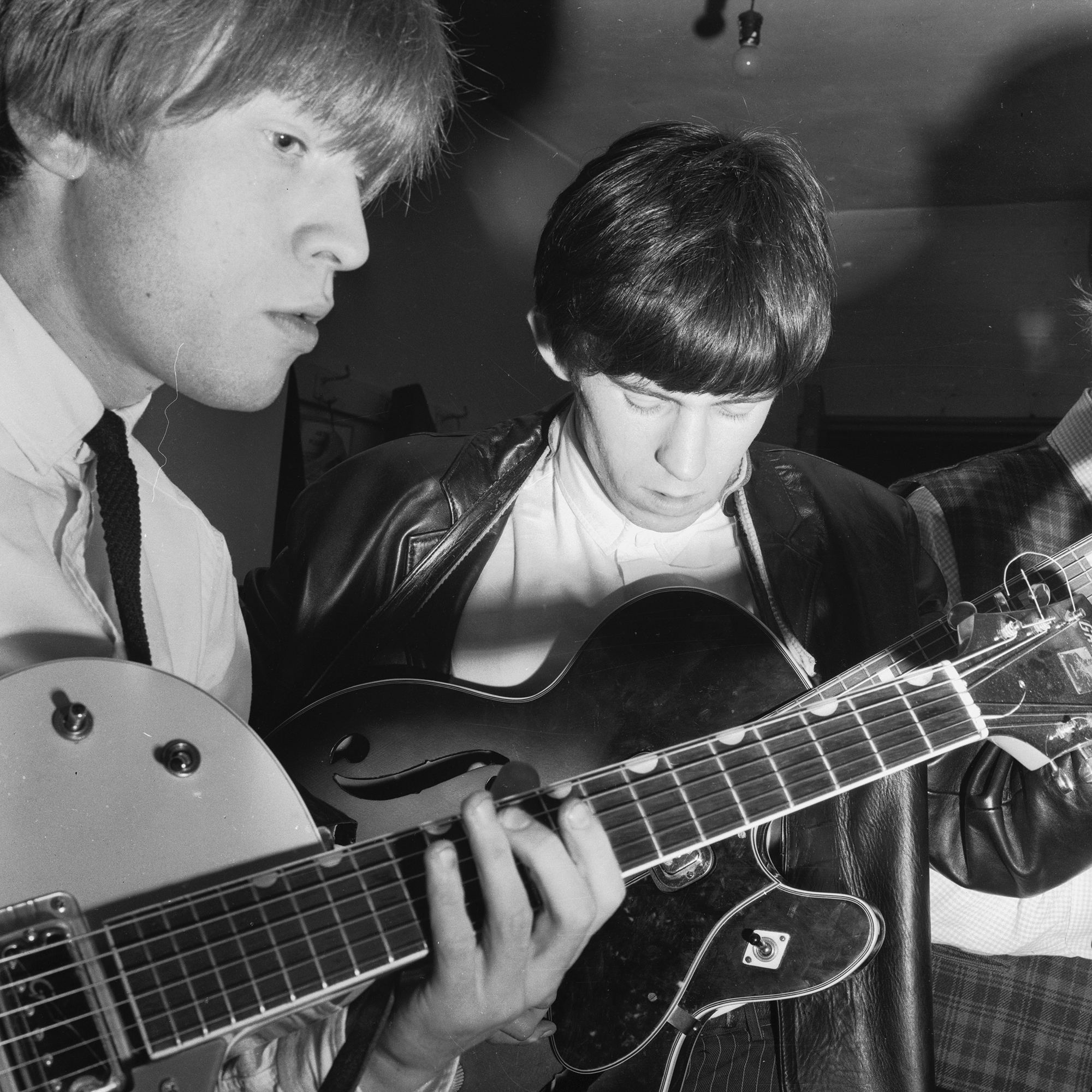“It was much harder to get a Rolling Stones sound with him.” Brian Jones, Mick Taylor or Ronnie Wood? Keith Richards says one guitarist was the wrong fit

Keith Richards has shared guitar duties in the Rolling Stones throughout his more than 60 years with the group. But as he revealed to Guitar Player, one guitarist never felt to him like a comfortable fit.
From the very start, the Rolling Stones’ sound was built around two guitarists: Richards and Brian Jones. Together, they shared lead and rhythm work: Richards employing electric guitar licks and lines learned from Chuck Berry records, while Jones played slide guitar — a rarity among British guitarists at that time — and wove his rhythm work around Richards’ melodic fills.
By 1969, Jones was kicked out the group after his drug use made him unreliable and a pair of drug arrests in England made it unlikely he could perform in America for the group's 1969 U.S tour. His replacement was Mick Taylor, a young Les Paul–toting electric blues guitarist who made a name for himself with John Mayall’s Bluesbreakers after Peter Green departed to form Fleetwood Mac in 1967.

Taylor was a powerful addition to the Stones, bringing fluid blues licks and a muscular electric guitar tone that stood in stark contrast to Richards’ riffier rock-and-roll style. For many, this marked the start of the Stones’ greatest era, when they released landmark albums like Sticky Fingers, Exile on Main St., Goat’s Head Soup and It’s Only Rock and Roll.
But perhaps the best example of the Richards–Taylor tandem can be heard on the group’s 1970 live album, Get Yer Ya’s-Ya’s Out, where the guitarists trade off solos song by song, panned left (Taylor) and right (Richards), giving listeners a chance to hear each in his best element, particularly on “Sympathy for the Devil.”
But by 1975, Taylor was gone, replaced by Ron Wood, who remains Richards’ sidekick to this day. While some lamented Taylor’s absence, Richards is not among them. As he told Guitar Player in our April 1983 issue, he and Taylor were not the ideal team when it came to the Stones’ classic sound.
“It was much harder to get a Rolling Stones sound with Mick Taylor,” he explained. “It was much more lead and rhythm, one way or the other.
All the latest guitar news, interviews, lessons, reviews, deals and more, direct to your inbox!
“As fabulous as he is as a lead guitarist, he wasn't as great as a rhythm player. So we ended up taking roles.
“When Brian and I started, it was never like that. It's much easier than with Brian, personally, but also with Ron, the basic way we play is much more similar.
“And this isn't in any way to knock Mick. I mean, he's a fantastic guitar player. Even if he couldn't play shit, I'd love the guy.
“But chemically we didn't have that flexibility in the band. It was, ‘You do this, and I'll do that, and never the twain shall meet.’”

On the other hand, Richards explained, Wood was a natural for the Stones. No rehearsals or changes of any kind were needed when he joined the band in 1975.
“No, that was the beauty of it. He was already so familiar with our stuff. After Mick Taylor left, we rehearsed for about six months with a lot of good guitar players from all over the world. And we could work with them, you know, they could work with us.
“But when Ronnie became available and suddenly walked in, that was it. There was no doubt. It was easy.”
Richards said the interplay between them was so easy that one would naturally fill in for the other.
“If he drops a cigarette I'll play his bit, and we'll realize later that I've covered for him or he's covered for me,” Richards said.
“And you think at the time, Oh, my God, what a gap, but when you listen to the tape, you find that it's been fixed right there at the moment, in a very unthought-about way. We pick it up and cover each other so that sometimes you can't really tell who's playing.”

Richards says that sort of easy interaction has a lot to do with his and Woody’s long partnership and the Stones’ continued longevity.
“A lick on a record — it doesn't matter who played it. All that matters is how it fits. The chemistry to work together like that has to be there. You have to work on it. Always. Figure out what to do with it.
“But basically it's not an intellectual thing you can think up and just put there. It has to be there. You have to find it.”
Christopher Scapelliti is editor-in-chief of GuitarPlayer.com and the former editor of Guitar Player, the world’s longest-running guitar magazine, founded in 1967. In his extensive career, he has authored in-depth interviews with such guitarists as Pete Townshend, Slash, Billy Corgan, Jack White, Elvis Costello and Todd Rundgren, and audio professionals including Beatles engineers Geoff Emerick and Ken Scott. He is the co-author of Guitar Aficionado: The Collections: The Most Famous, Rare, and Valuable Guitars in the World, a founding editor of Guitar Aficionado magazine, and a former editor with Guitar World, Guitar for the Practicing Musician and Maximum Guitar. Apart from guitars, he maintains a collection of more than 30 vintage analog synthesizers.
